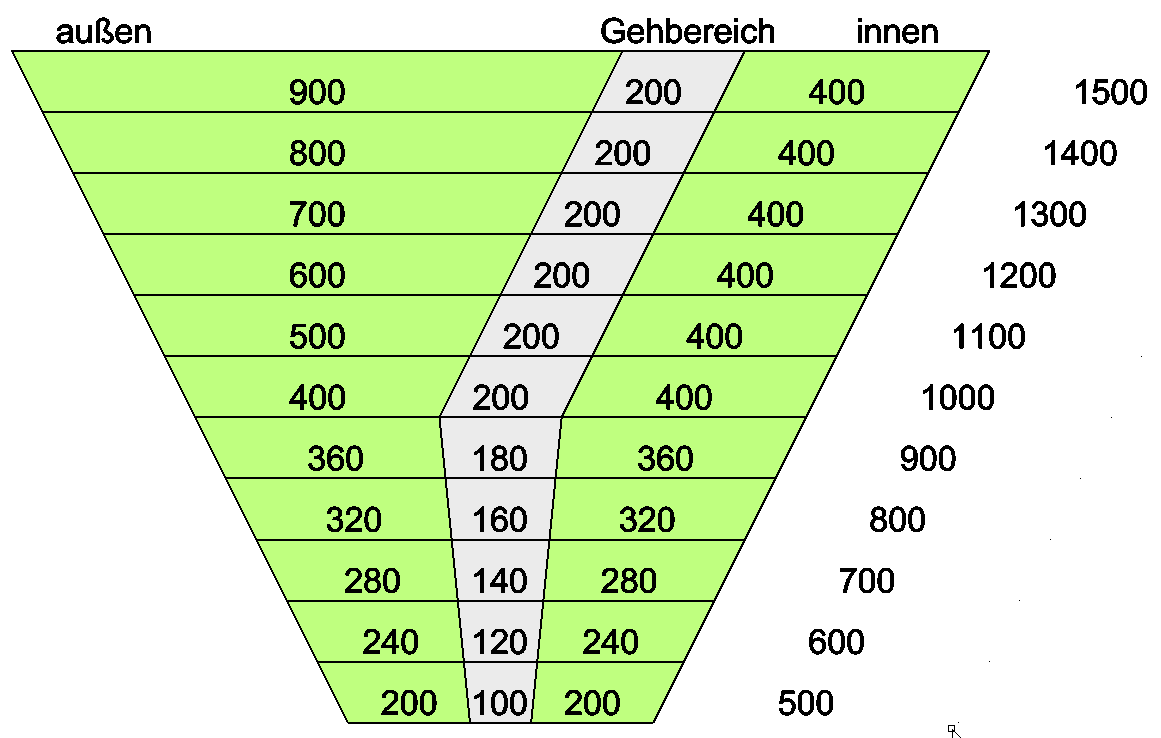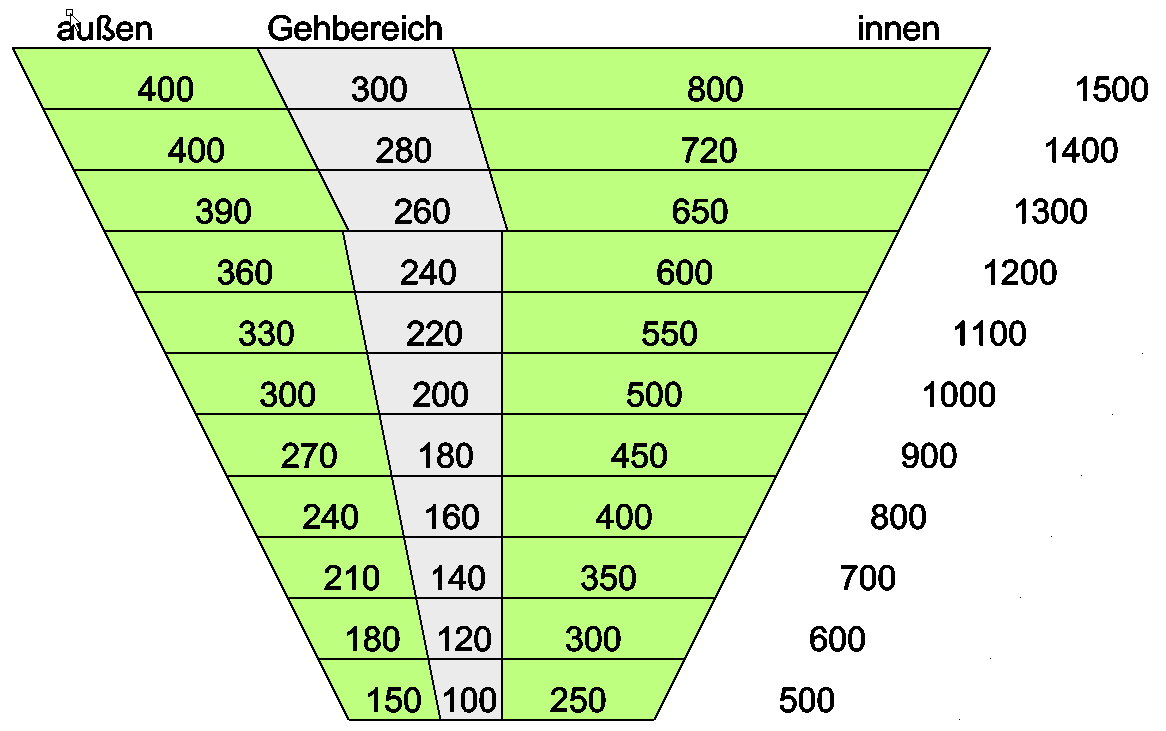
Definition and calculation of the walking area – the invisible but essential zone for stair design and walking line guidance.
See how fast it worksThe walking area is essentially the “strip” where the staircase is normally used. The walking line must be located within it. Although it cannot be seen, it is essential for the further design of a staircase, since its position influences all calculations.
In winder stairs, the radius of the inner boundary of the walking area must be at least as large as the smallest distance of this line to the inner boundary of the usable stair width (in the example 360 mm).
For usable stair widths up to 1000 mm, the walking area has a width of 2/10 of the usable stair width and is centered (in the example on the right side).
For usable stair widths over 1000 mm – except for spiral staircases – the walking area is 200 mm wide. Its distance from the inner boundary of the usable stair width is a maximum of 400 mm, so it is not centered (in the example on the left side).
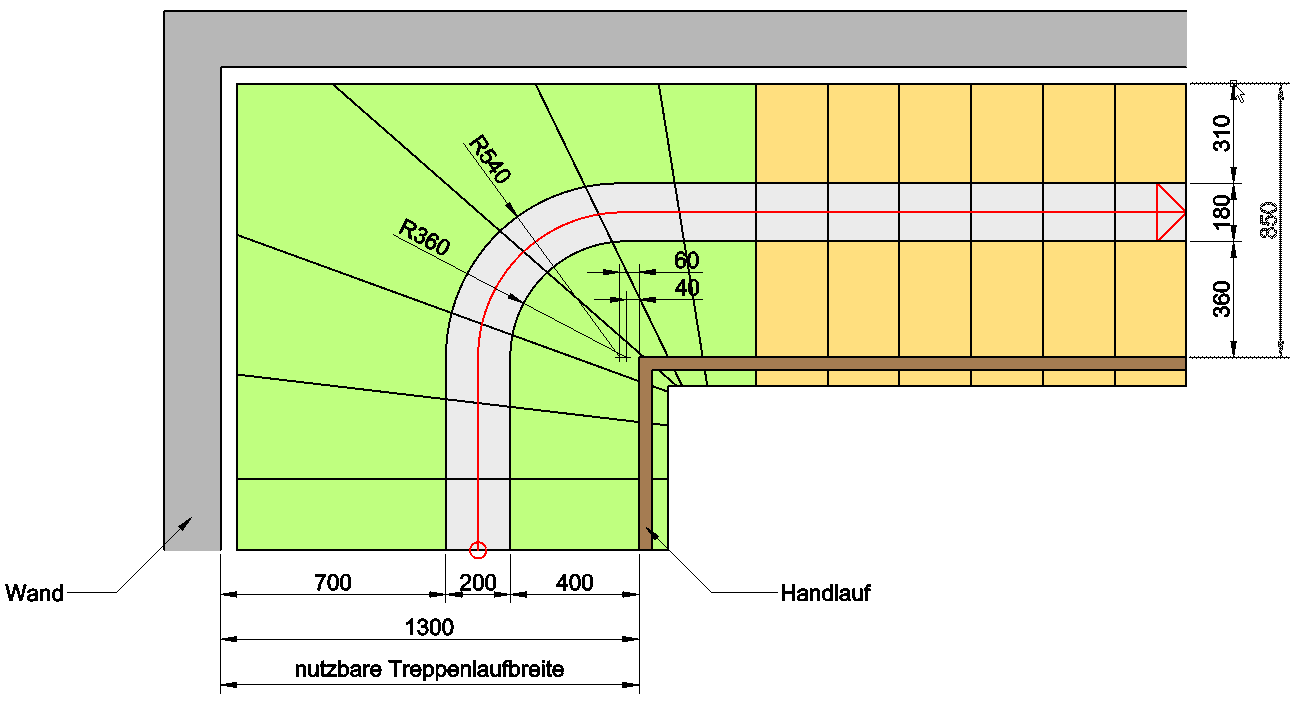
In spiral staircases, the walking area is always 2/10 of the usable stair width. For usable widths up to 1300 mm, the inner boundary of the walking area lies in the middle of the usable width.
The distance of the walking area from the outer boundary of the usable stair width must never exceed 400 mm. The limit of 1300 mm is chosen so that from this value onward the distance remains constant at 400 mm.
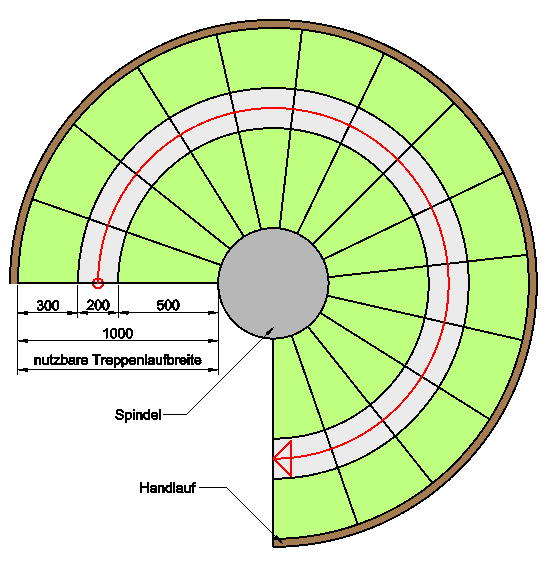
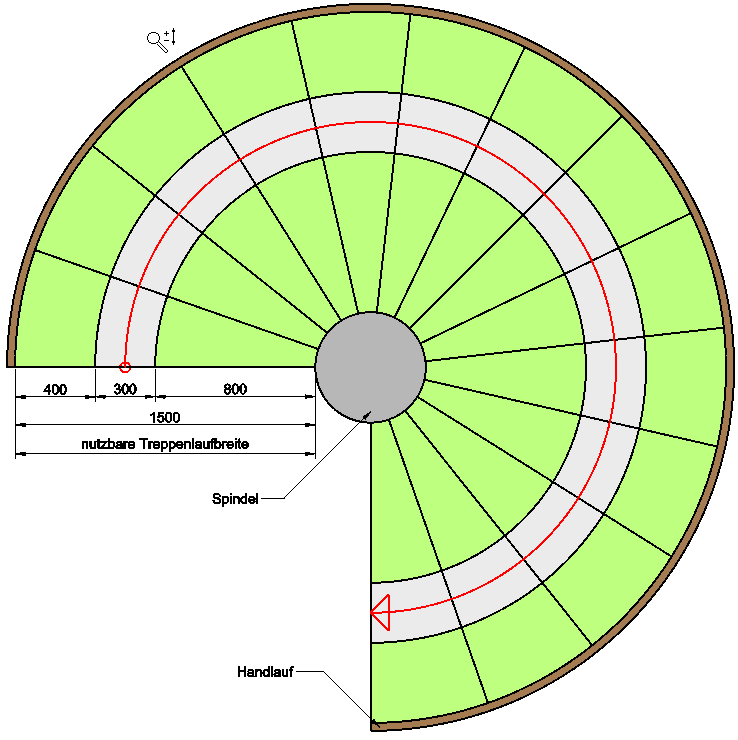
The relationship between the width and position of the walking area and the usable stair width is often shown in a trapezoid diagram, so we will present it here as well:
